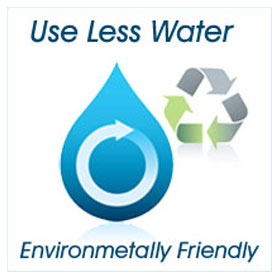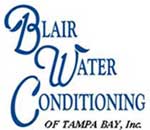What Is Water Conditioning?
Water conditioning is defined as a means to strain out impurities from a water source. In order to shed some light on the subject of water conditioning in a household setting I have provided the following comparison of commonly used terms on this subject.
Water Conditioning as it pertains to household use can be broken down into two types: Water Softening and Water Purification.
Water Softening is the practice of removing Totally Dissolved Solids (TDS) from the water in a process called ion exchange. The ion exchange process percolates water through bead-like spherical resin materials called ion-exchange resin. Ions in the water are exchanged for other ions that are fixed to the beads in an exchange. The softeners contain beads that exchange two sodium or potassium ions for every calcium or magnesium ion removed from the "softened" water. The TDS in water causes many problems in a household. They are harmful to your plumbing and appliances, uncomfortable to you skin and hair, and leave a mess wherever water is present.
Hard water is the most common water problem in the Tampa Bay Area. Most of our water comes from the Florida Aquifer where it is exposed to the minerals that make our water hard. The most common hardness causing minerals in our water supply are Calcium, Iron, and Magnesium.
Calcium deposits are very evident in the shower, on your glassware, and at your kitchen sink and are commonly referred to as soap scum and water spots.
These particles are also left behind in your dishwasher, hot water heater and the plumbing throughout your home. While they are not as obvious they still cause problems and decrease the life span of the appliances.
Hard water also has an adverse effect on your laundry. The particles essentially beat up your clothes and towels leaving them dingy and rugged looking.
Probably the most noticeable difference between hard water and soft water is with your hair and skin. Removing the hard water particles allows your soap and shampoo to lather properly and provide your skin and hair with a much cleaner feeling.
There are two methods of Ion Exchange for a household
Automatic Water Conditioners: While there are many different brands of automatic water softeners that vary in price and reliability, they all basically go through the same process. A typical water softener is an appliance that requires water, electricity and salt to perform the regeneration process. When operating properly the softener backwashes the resin, doses it in salt, then rinses out the salt before putting the system back into service. The problem with automatic water conditioners is that the valves, motors and other components necessary to perform this operation are subject to the water, salt, electricity and the harsh Florida sun. This is not a good combination for any appliance.
Portable Exchange Service, which is what we do at Blair Water Conditioning, is a service whereby we simply show up every four weeks and exchange your tank(s) with a fresh tank(s) packed with clean regenerated resin. The regeneration process explained above takes place back at our plant in Oldsmar. Some of the benefits of our system vs. and automatic system are as follows:
-
- No equipment to buy/finance
-
- No SALT to add
-
- No electricity needed
-
- No Salt Water discharge on your property
-
- Saves about 10,000 water per year
-
- No mechanical parts to breakdown
-
- No timers to set
-
- Minimal space required
Water Purification is the next step beyond water softening in a household environment. It is typically not necessary or recommended to purify your water for an entire household. The reason for this is that purifying water removes chlorine that does serve an important disinfecting purpose throughout the pipes and fixtures in your home. Purified water, however, is highly recommended for drinking and cooking. There are several ways to purify water and the two most common are Carbon Absorption and Reverse Osmosis
Carbon absorption is a widely used method of home water filter treatment because of its ability to improve water by removing disagreeable tastes and odors, including objectionable chlorine. Activated carbon effectively removes many chemicals and gases, and in some cases it can be effective against microorganisms. Carbon absorption is the process used in filters within your refrigerator, for ice cubes and cold drinking water, and in pitcher type filters.
Reverse osmosis (RO) is the most economical method of removing up to 99% of all contaminants. The pore structure of R/O membranes is much tighter than UF membranes. R/O membranes are capable of removing nearly all particles, bacteria and organics. R/O's are used by nearly all bottled water companies. Because it takes nearly 3 gallons of water in order to produce 1 gallon of purified drinking water, it is not practical, or necessary to treat all the water within your household with an R/O filter. R/O membranes are very restrictive to water flow therefore they typically require a storage tank in order to provide water when needed. These systems are typically located under the kitchen sink and provide water to separate room temperature tap as well as the refrigerator.

Find Out How You Can Get Your First Month Free!


